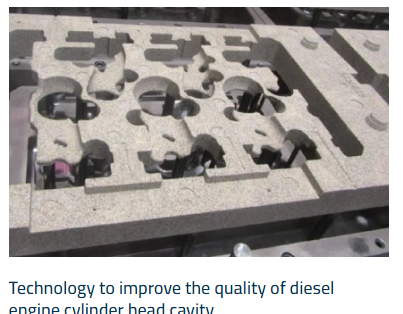Summary Review of Materials
The selection of materials for the housing of the new energy motor is very important for the overall efficiency, durability, and performance of the electric vehicle (EV). They must have special thermal, mechanical, and environmental properties. With new energy vehicles increasingly in demand, this critical material science innovation is on a path to help the industry achieve those stringent targets.
Lightweight and Efficient Aluminum Alloys
Being a light weight material with good thermal conductivity, aluminum alloys are the prime choice of material for motor housing. Aluminum series A356 and A380 are widely used in the production of motor housings. Providing a good strength balance of machinability and corrosion resistance A356, for example, produces heat conductivity capacity is 120-180 W/mK and density of 2.68 g/cm³ this is well suited for parts For example, the application of heat dissipation or weight reduction applications.
Magnesium Alloys: The Lightweight, Ultra-High-Use Choices
Most commonly you will see magnesium alloys as a substitution, particularly where light weight is the top priority. They are about 35 % lighter than alu and also offer good thermal management properties. Yet its lower melting point and flammability demand a more careful treatment in the manufacturing process.
The future of materials in housing: composite materials
Composites, and in particular carbon fiber-reinforced polymers (CFRPs), are becoming more important to high-performance electric vehicle applications. Composites are much pricier than materials like metal, but they provide excellent strength-to-weight ratios and corrosion resistance. They also can be designed with specific thermal properties achieved via different resins/mfg processes.

Steel (and Stainless Steel) – Harder for Durability and Strength
Steel and stainless steel are chosen in structural applications where rigidity and resistance to damage are critical. Although these materials are much heavier than aluminum and magnesium, they offer better mechanical properties and heat resistance. For instance, stainless steel is frequently employed in regions of the motor casing that are subjected to extremely corrosive surroundings or where extra electromagnetic shielding is necessary.
Thermal management technologies
High-quality thermal contHope you have a better understanding of the effects of thermal management for Electric Motors now! As well as using materials having excellent natural thermal properties, manufacturers usually incorporate sophisticated cooling systems in the motor housing design. There are a wide of variety of heat dissipation-enhancing techniques available for materials such as embedded cooling channels or external heat sinks.
Trade-offs between cost and performance
The material is traditionally a trade-off between cost and performance. Performance-wise, composite materials can be the best, however they are so expensive to manufacture in larger series applications that they are generally relegated to higher-end or specialized vehicles. It is also still the the most common construction material, as it balances price with good all-round properties.
Progress in Material Science
Latest work in the field of material science have been focusing in the development of new alloys and composites to deliver the same performance of yesteryear but at lower costs. This is also the case with high conductivity aluminum alloys or hybrid composite materials and it is the evolution of the industry that supports the development of new energy vehicles.
Scoring the right material for a New energy motor housing shell is a relatively comprehensive decision that affects the performance of an electric vehicle itself. Every material has its own advantages and drawbacks, and they are selected based on a number of factors such as performance demands, budget limits, and the environmental conditions in which the car will be operating. With technological progress, the type of material applied for the production of motor housings will progress as well, enabling the advancements of capabilities and broadened acceptance of new energy vehicles.